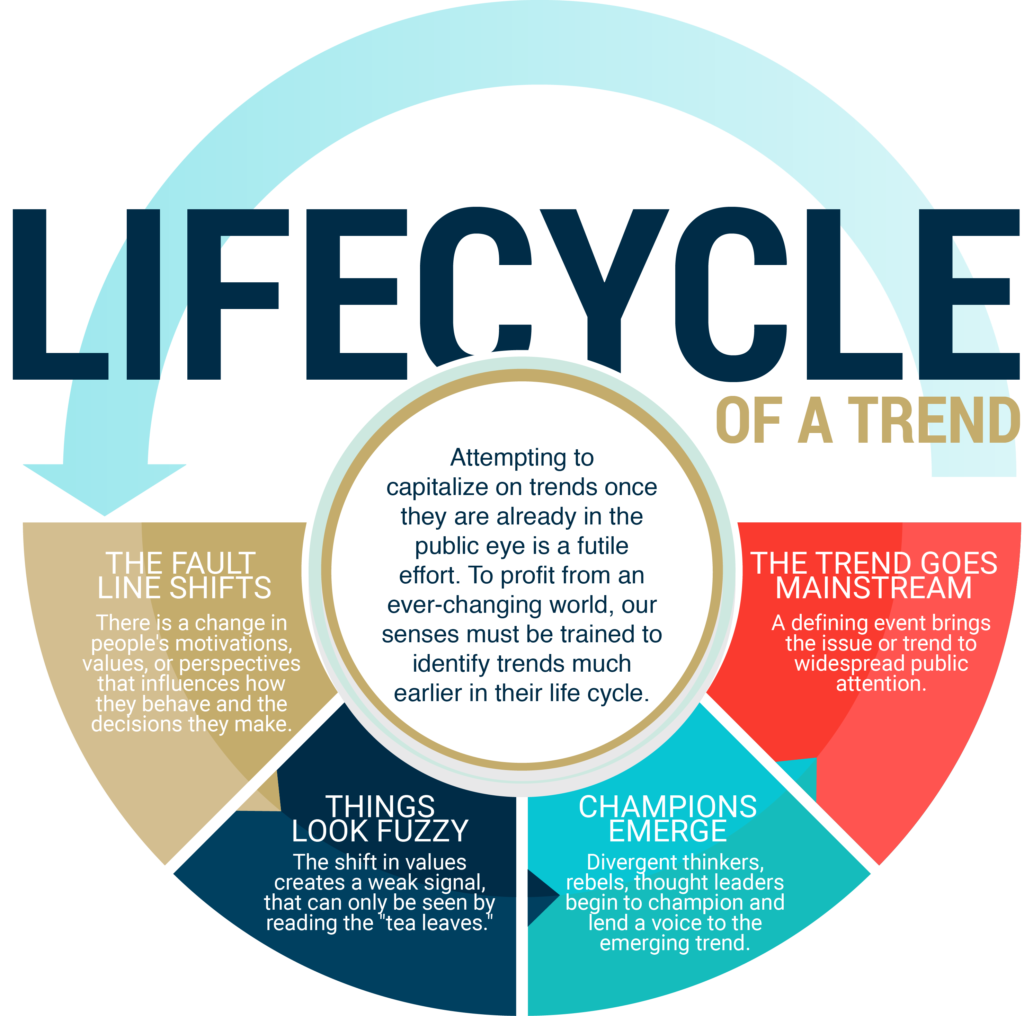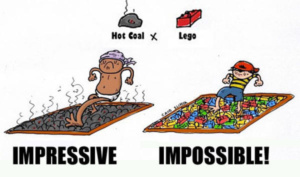How Long Does the Future Last? The Lifecycle of Futures Intelligence
Environmental scanning is the lifeblood of Strategic Foresight. You can be a futurist and never make a single scenario, but you can’t be a futurist if you never scan. Scanning helps us to rewire our brains and supports our pattern and sensemaking skills.
After weeks of scanning, it’s time to merge research into something tangible. A collection of scan hits and occurrences unveils that something larger is emerging– a trend! Trends deserve names and solid descriptions that include several examples of how the trend manifests across society. Perform this several times over and you’ve got yourself a trend card deck.
Phew! That was a lot of work. A year goes by, and you think to yourself, “are these trends still valid?”. It’s the right question to have, and one that we hear all the time.
trends: what are they and why do they matter?
A trend is a general direction into which something is changing, developing, or veering toward. Sometimes trends are weak signals. They are medium to long-term in duration and can gain momentum over time. Although we often think of trends as “the future”, trends really represent “the present”. That’s because we see evidence of them today. Trends need to be analyzed for future impact in order to be useful.

The lifecycle of a particular trend depends on how early you captured it emerging. If it’s a trend like “Crowdsourcing” which has gone far into the mainstream, spreading its limbs deep and wide into society, then you may need to consider using the Point of Impact questions to brainstorm the future evolutions of the trend. Answering these questions and supporting them with further evidence will help embolden the trend, ensuring that you’ll be able to safely incorporate it into your strategies.
Alternatively, if you found a trend that was just beginning to emerge– one that you identified from noticing a change in people’s perspectives, values, or motivations– this trend is likely in its infancy. You can be confident that this trend will last for years to come.
A trend could have an extremely long lifecycle depending on how powerful it impacts society and the number of times it continually morphs. The question actually isn’t if the trend is still valid, but how has it changed, and what new examples and sources can be supplemented to further support the idea?
“But The Futures School, you said that trends are not the future and they’re actually the present. So how long does the future last, and how do I find it?”
Ah yes, great question. To find the future, you must conduct pattern development.
patterns: clusters of futures intelligence
Patterns are emerging landscapes of change. They are wide, all encompassing, disruptive swaths of futures intelligence. They are made up of many trends, values, and implications. Patterns are how you can rebut the boss who read an article last week about how the Metaverse is all hype and doesn’t want to hear anything else about the future.
You see, trends are brittle. Think of trends as LEGO blocks. You know how painful it is to step on a single LEGO block? Even if you don’t have children, everyone can attest to how painful it is to step on a LEGO. Imagine this pain every time you think of building your strategies off of one or three trends. Don’t do it!

We want to build our LEGOs into skyscrapers. For example, our open source trend card deck represents a larger landscape of change known as the “Creator Economy”. This pattern includes 30 trends and their subsequent values and implications, which together illuminate a world where access to assets trumps ownership. Crowd-fueled innovation is spurring a transition to a new economy. The many trends that make up this pattern– such as Additive Manufacturing, the Attention Economy, Reputation Currency, and Personalization– will collide and are already morphing the economy into something new.
Patterns are the foundations of robust futures intelligence, and they can last a decade or more. The Futures School has worked alongside clients that successfully base their strategic plans on rigorous pattern development. In addition, we assist in developing trend card decks as part of our custom engagement offerings.
If you still have questions about this topic, feel free to contact us! We’d be more than happy to send further resources for your particular needs.

Ashley Bowers
Creative Strategist, TFSX
Ashley leverages her expertise in sustainable design, environmental science, and marketing to support user-experiences with a holistic approach. Her goal is to empower changemakers, organizations, institutions and governments to thrive in a world of exponential uncertainty and complexity.
More on Ashley
